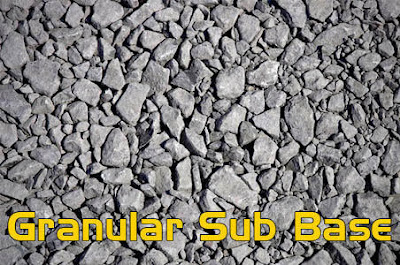Road Construction : Highway Laboratory
As I have told you in my previous
blog how to find the dry density of soil. So today we will talk about what the
tests are done in the laboratory before the road is prepared and what
precaution should be kept in mind.
Before constructing the road,
we examined the soil there and its C.B.R. tests are done. C.B.R test stands for " California Bearing Ratio
".
First of all we find the Moisture Content after the after Compaction
Then we do OMC ( Optimum Moisture Content )
then MDD (Maximum Dry Density ), then we do CBR ( California Bearing Ratio ). After that
the GSB ( Granular Sub Base)
happens, we hold 25cm of the thickness of the GSB
( Granular Sub Base). After that
we put WBM
WBM stands for ( Water Bond Macadum
).
The thickness of this WBM ( Water Bound
Macadum ) is 30cm after compression. It has 2 layers of G2
and G3. The thickness of the G2 layer is between 30 to 65 mm and the thickness
of the 3 layers is between 22.5 and 45mm.
WBM + GSB have a thickness of 55cm
after compression.
Then we will put in the Spray of Bitumen whose Viscosity Grade is
30.
Then we will use DBM ( Dense Bituminous Macadum )
whose thickness
should be 50 to 55mm. The aggregate used in DBM is like a layer with dimension
is 20mm + 10mm + 6mm + dust. This DBM contains 4.5 percent of
Bitumin. Then we put BC i.e. Bituminous
Concrete
in it, whose thickness is 40mm. The
aggregate used is 10 mm + 6 mm + dust. It has 5.4 percent of bitumen.
STEP WISE : MC < OMC
< MDD < CBR < GSB < WBM < Spray of Bitumin < DBM < BC.
We use SDBC
( Semi Dense Bituminous Concrete) to repair any old roads. Its thickness
is 25 mm, in which 4.5% of butimin and aggregate occur in 6 mm + dust.



















No comments